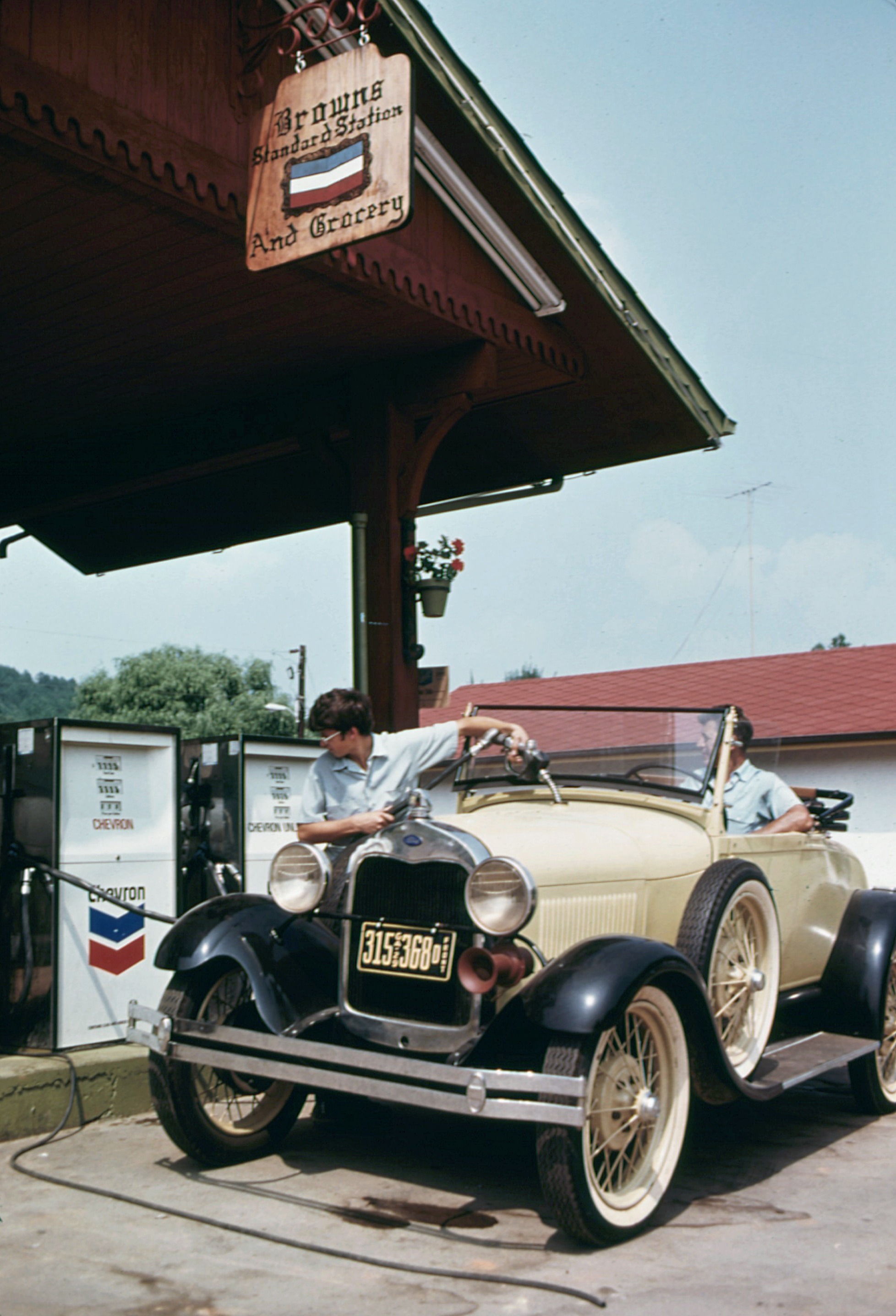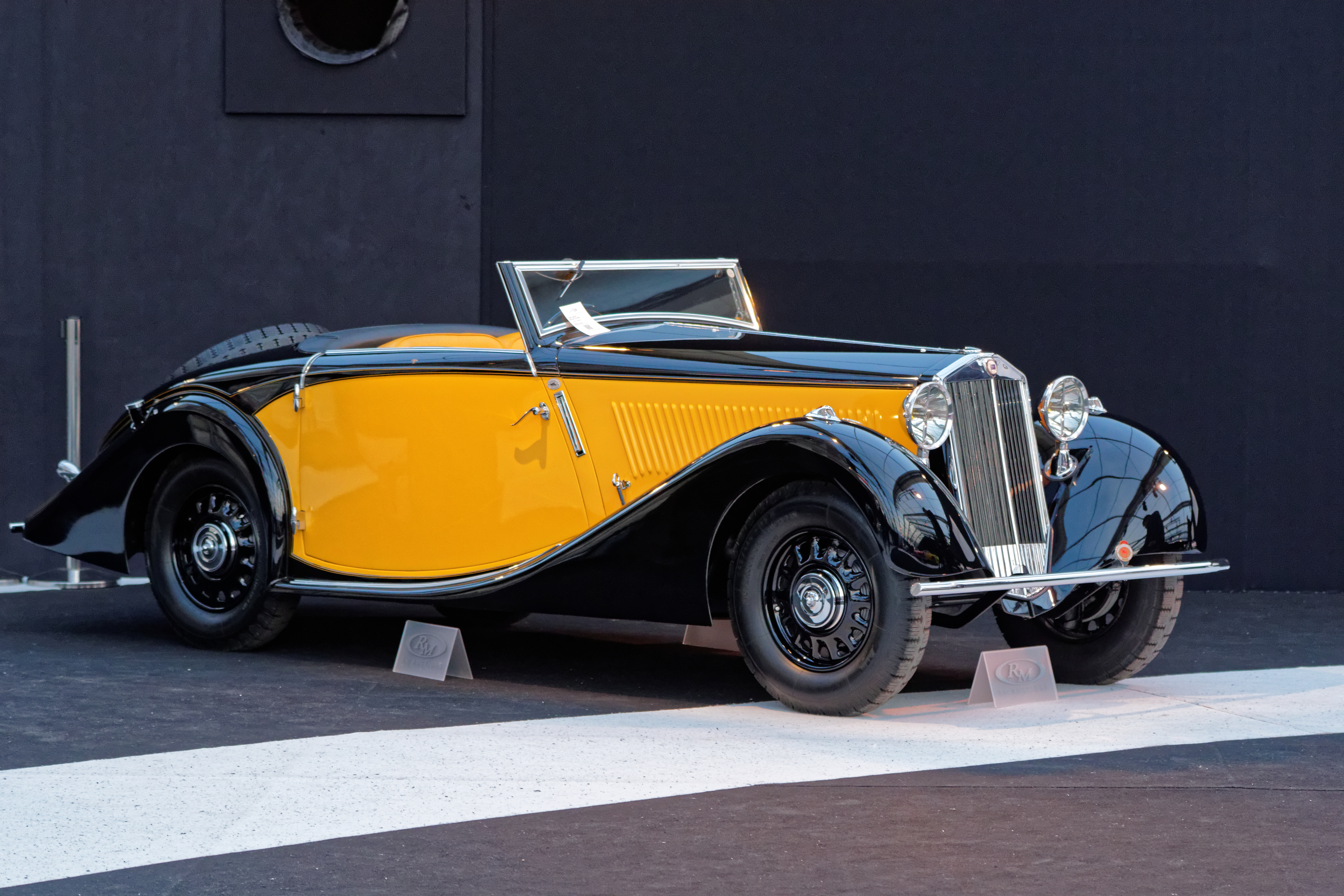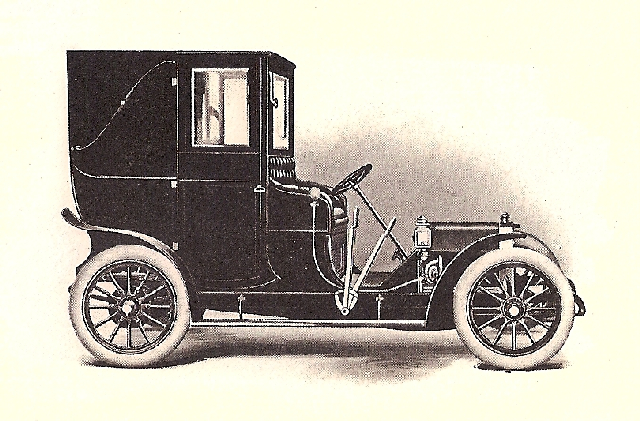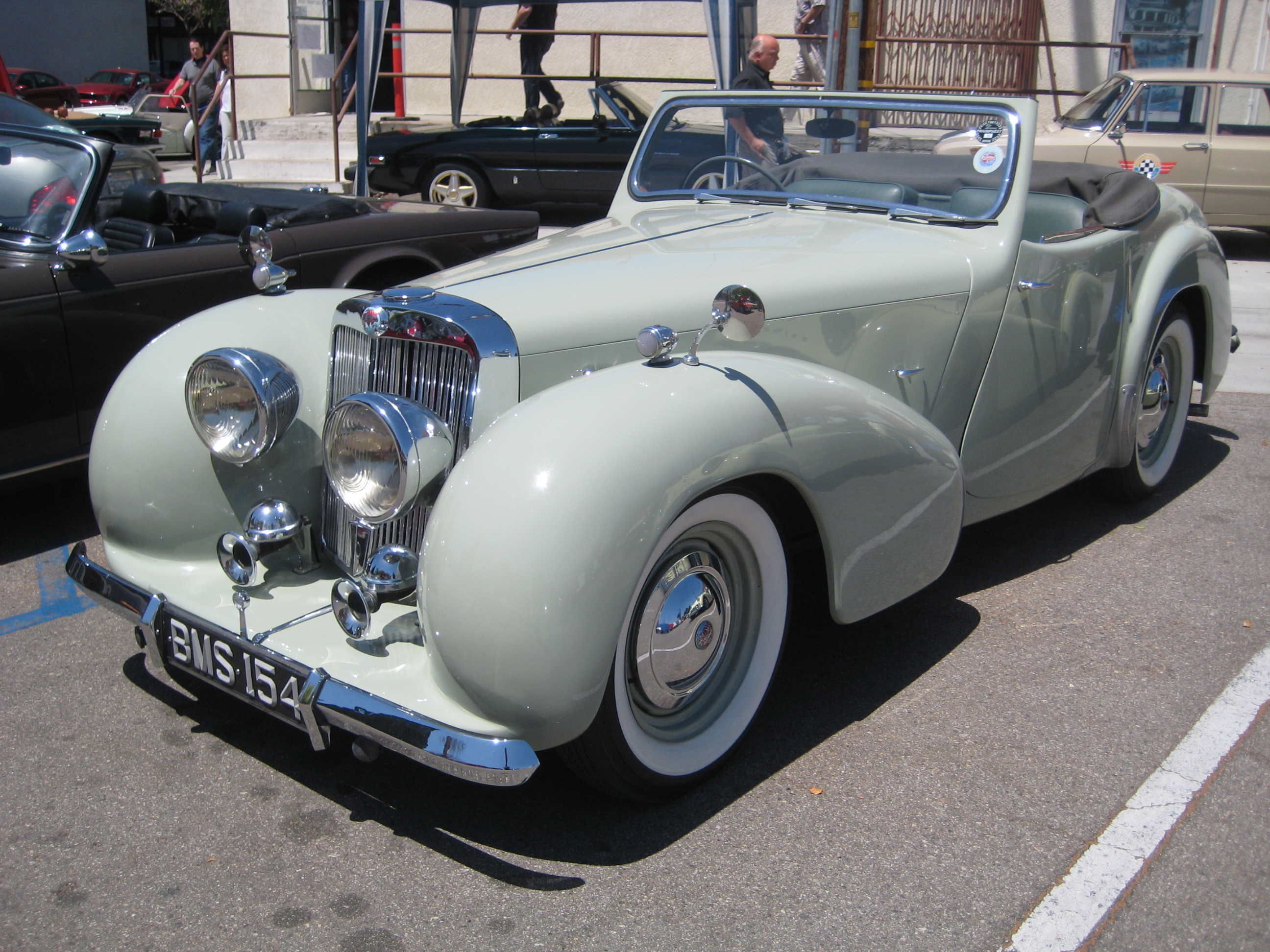|
Cabriolet
A convertible or cabriolet () is a passenger car that can be driven with or without a roof in place. The methods of retracting and storing the roof vary across eras and manufacturers. A convertible car's design allows an open-air driving experience, with the ability to provide a roof when required. A potential drawback of convertibles is their reduced structural rigidity (requiring significant engineering and modification to counteract the side effects of almost completely removing a car's roof). The majority of convertible roofs are of a folding construction framework with the actual top made from cloth or other fabric. Other types of convertible roofs include retractable hardtops (often constructed from metal or plastic) and detachable hardtops (where a metal or plastic roof is manually removed and often stored in the trunk). Terminology Other terms for convertibles include cabriolet, cabrio, drop top, drophead coupé, open two-seater, open top, rag top, soft top, spid ... [...More Info...] [...Related Items...] OR: [Wikipedia] [Google] [Baidu] |
Cabriolet (carriage)
A cabriolet (alternatively cabriole) is a light horse-drawn vehicle, with two wheels and a single horse. The carriage has a folding hood that can cover its two occupants, one of whom is the driver. It has a large rigid apron, upward-curving shafts, and usually a rear platform between the C springs for a Groom (profession), groom. The design was developed in France in the eighteenth century and quickly replaced the heavier hackney carriage as the vehicle for hire of choice in Paris and London. Etymology The word ''cabriolet'' is derived from the French version of the Italian ''capriolo'' meaning a Goat, young goat, due to the swaying motion of the vehicle at speed suggestive of the skipping and capering of a kid. The ''cab'' of taxicab, taxi-cab or "hansom cab" is a shortening of ''cabriolet''. One who drives a horse-drawn cab for hire is a ''cabdriver''. History Imported from France to England in the 1790s, the cabriolet was originally a two-seater driven by its owner, ... [...More Info...] [...Related Items...] OR: [Wikipedia] [Google] [Baidu] |
Convertible
A convertible or cabriolet () is a Car, passenger car that can be driven with or without a roof in place. The methods of retracting and storing the roof vary across eras and manufacturers. A convertible car's design allows an open-air driving experience, with the ability to provide a roof when required. A potential drawback of convertibles is their reduced Torsion (mechanics), structural rigidity (requiring significant engineering and modification to counteract the side effects of almost completely removing a car's roof). The majority of convertible roofs are of a folding construction framework with the actual top made from cloth or other fabric. Other types of convertible roofs include retractable hardtops (often constructed from metal or plastic) and Convertible#Detachable hardtop, detachable hardtops (where a metal or plastic roof is manually removed and often stored in the trunk (car), trunk). Terminology Other terms for convertibles include cabriolet, cabrio, drop top, ... [...More Info...] [...Related Items...] OR: [Wikipedia] [Google] [Baidu] |
Cadillac Eldorado
The Cadillac Eldorado is a luxury car manufactured and marketed by the Cadillac Motor Car Division of General Motors from 1952 until 2002, over twelve generations. The Eldorado was at or near the top of the Cadillac product line. The original 1953 Eldorado convertible and the Eldorado Brougham models of 1957–1960 had distinct bodyshells and were the most expensive models offered by Cadillac during those years. The Eldorado was never less than second in price after the Cadillac Series 75 limousine until 1966. Beginning in 1967, the Eldorado retained its premium position in the Cadillac price structure, but was manufactured in high volumes on a unique, two-door personal luxury car platform. The Eldorado carried the Fleetwood designation from 1965 through 1972, and was seen as a modern revival of the pre-war Cadillac V-12 and Cadillac V-16 roadsters and convertibles. Name The nameplate '' Eldorado'' is a contraction of two Spanish words that translate as "the gilded (i.e. ... [...More Info...] [...Related Items...] OR: [Wikipedia] [Google] [Baidu] |
Retractable Hardtop
A retractable hardtop — also known as "coupé convertible" or "coupé cabriolet" — is a car with an automatically operated, self-storing hardtop, as opposed to the folding textile-based roof used by traditional convertible cars. Improved climate control and security benefits are traded against increased mechanical complexity, cost, weight, and often reduced luggage capacity. A 2006 ''New York Times'' article suggested the retractable hardtop might herald the demise of the textile-roofed convertible, and a 2007 ''Wall Street Journal'' article suggested "more and more convertibles are eschewing soft cloth tops in favor of sophisticated folding metal roofs, making them practical in all climates, year-round." History 1922 Ben P. Ellerbeck was granted a patent (U.S. No. 1,379,906 on 31 May 1921) for a retractable hardtop roof design for cars. He developed several scale models for the 1922 Automobile Body Builders Exhibition in New York City. In 1922, he modified a 1919 Hud ... [...More Info...] [...Related Items...] OR: [Wikipedia] [Google] [Baidu] |
Victoria (carriage)
The victoria is an elegant style of doorless four-wheeled open carriage, drawn by one or two horses, based on the Phaeton (carriage), phaeton with the addition of a coachman's seat at the front, and with a retractable roof over the passenger bench. Named for Queen Victoria, According to ''Britannica'', it developed in France. it was possibly based on a phaeton made for George IV. The type was made some time before 1844, but acquired the name ''victoria'' around 1860, and was being presented as such at the 1862 ''International Exhibition in London.''''The Dutch coach builder Hermans sent a 'victoria' to the Exhibition,'' Campo, J.W. del (1864). ''Verslag der Wereldtentoonstelling te Londen in 1862.'' ’s Gravenhage: Van Langenhuysen.. Drawn by one or two horses, it became a fashionable style of carriage for ladies riding in the park. The victoria has a low body with a forward-facing seat for two passengers under a retractable ''calash'' top and a raised driver's seat on an iron fra ... [...More Info...] [...Related Items...] OR: [Wikipedia] [Google] [Baidu] |
BMW M3
The BMW M3 is a high-performance version of the BMW 3 Series, developed by BMW's in-house motorsport division, BMW M GmbH. M3 models have been produced for every generation of 3 Series since the E30 M3 was introduced in 1986. The initial model was available in a coupé body style, with a convertible body style made available soon after. M3 saloons were offered initially during the E36 (1994–1999) and E90 (2008–2012) generations. Since 2014, the coupé and convertible models have been rebranded as the 4 Series range, making the high-performance variant the M4. Variants of the 3 Series since then have seen the M3 produced as a saloon, until 2020, when the M3 was produced as an estate (Touring) for the first time, alongside the saloon variant. E30 generation (1986–1991) The first BMW M3 was based on the E30 3 Series and was intended to be a homologation special to satisfy the Deutsche Tourenwagen Meisterschaft and Group A Touring rules, which required a total ... [...More Info...] [...Related Items...] OR: [Wikipedia] [Google] [Baidu] |
Coupé De Ville
Coupé de ville is a car body style produced from 1908 to 1939. It has an external or open-topped driver's position, as well as an enclosed compartment for passengers. Although the different terms may have once had specific meanings for certain car manufacturers or countries, the terms are often used interchangeably. Some coupés de ville have the passengers separated from the driver in a fully enclosed compartment while others have a canopy for the passengers and no partition between the driver and the passengers (passengers enter the compartment via driver's area). Origin The separate exposed area for the driver followed from horse-drawn carriages. The term "coupé de ville" came into existence in the 19th century before the invention of the automobile. The initial usage of the term was for a variant of the coupé carriage that is very similar to the British clarence carriage. The term "de ville" is French for "for town" and indicates that the vehicle is for use in town ... [...More Info...] [...Related Items...] OR: [Wikipedia] [Google] [Baidu] |
Vehicle Frame
A vehicle frame, also historically known as its ''chassis'', is the main supporting structure of a motor vehicle to which all other components are attached, comparable to the skeleton of an organism. Until the 1930s, virtually every car had a structural frame separate from its body, known as ''body-on-frame'' construction. Both mass production of completed vehicles by a manufacturer using this method, epitomized by the Ford Model T, and supply of rolling chassis to coachbuilders for both mass production (as by Fisher Body in the United States) and to smaller firms (such as Hooper (coachbuilder), Hooper) for bespoke bodies and interiors was practiced. By the 1960s, unibody construction in passenger cars had become common, and the trend towards building unibody passenger cars continued over the ensuing decades. Nearly all trucks, buses, and most Pickup truck, pickups continue to use a separate frame as their chassis. Functions The main functions of a frame in a motor vehicle ... [...More Info...] [...Related Items...] OR: [Wikipedia] [Google] [Baidu] |
MG T-type
The MG T-Type is a series of body-on-frame open two-seater sports cars that were produced by MG from 1936 to 1955. Known as the Midget, the series included the TA, TB, TC, TD, and TF models. Although the design was contemporary in the 1930s, it had grown outdated by the 1950s, and was replaced by the all new MGA in 1955. The TF name was reinstated in 2002 on the mid-engined MG TF sports car. TA Midget The TA Midget replaced the PB in 1936. It was an evolution of the previous car and was wider in its track at and longer in its wheelbase at . The previous advanced overhead-cam inline-four engine was by then not in use by any other production car so it was replaced by the MPJG OHV unit from the Wolseley Ten, but with twin SU carburettors, modified camshaft and manifolding. The engine displaced just 1292 cc, with a stroke of and a bore of and power output was 50 hp (40.3 kW) at 4,500 rpm. The four-speed manual gearbox gained synchromesh on the two t ... [...More Info...] [...Related Items...] OR: [Wikipedia] [Google] [Baidu] |
Triumph Roadster
The Triumph Roadster is a roadster produced by Britain's Standard Motor Company from 1946 until 1949. It was first available as the Triumph 1800 Roadster (18TR) from 1946 to 1948 and then as the Triumph 2000 Roadster (TRA) from 1948 to 1949. Triumph 1800 Roadster (18TR) The 1800 Roadster, model number 18TR, was designed in the closing days of World War II. Triumph had been bought by the Standard Motor Company in 1944, and the managing director of Standard, Sir John Black, wanted a sports car to take on Jaguar, which had used Standard engines in the pre-war period. Frank Callaby was selected to style the new car. After getting Black's approval for the general shape, Callaby worked with Arthur Ballard to design the details of the body. Design of the rolling chassis was by Ray Turner. Walter Belgrove, who had styled the pre-war Triumphs and was employed as Chief Body Engineer, had no part in the design. Early post-war steel shortages meant that most of the body was built from alu ... [...More Info...] [...Related Items...] OR: [Wikipedia] [Google] [Baidu] |
Mazda MX-5 (NC)
The Mazda MX-5 (NC) is the third generation of the Mazda MX-5 manufactured from 2005 to 2015. At its introduction in 2005, it won the Car of the Year Japan Award and made ''Car and Driver''s Car and Driver 10Best, 10Best list from 2006 to 2013. The NC is the first MX-5 generation to offer a retractable hardtop variant, with its roof able to fold or deploy in 12 seconds without reducing trunk space. 2006—2008 (NC1) The NC featured exterior styling by Yasushi Nakamuta sharing no components with the Mazda MX-5 (NB), NB, except for the fender-mounted turn signal lights on non-U.S. models, and rear differential internals. The chief designer of this model generation was Moray Callum. The 2003 Mazda Ibuki concept served as a preview of the new model. The suspension changed from a four-wheel Double wishbone suspension, double wishbone setup to a front wishbone/rear Multi-link suspension, multilink setup, shared with the Mazda RX-8. NC models featured traction control system, tracti ... [...More Info...] [...Related Items...] OR: [Wikipedia] [Google] [Baidu] |
Rambler American
The Rambler American is a compact car that was manufactured by the American Motors Corporation (AMC) between 1958 and 1969. The American was the second incarnation of AMC forerunner Nash Motors' compact Nash Rambler, Rambler that was introduced in 1950 and marketed after the merger with Hudson Motors under both marques during the 1954 and 1955 model years. The Rambler American can be classified into three distinct model year generations: 1958–1960, 1961–1963, and 1964 until 1969. During the entire length of its production, the car was sold under the Rambler (automobile), Rambler brand and in 1969 became the last Rambler-named automobile marketed in the Canadian and United States markets. The compact Rambler American was most often the lowest priced car built in the U.S. It was popular for its economy in ownership, as was proven by numerous Mobil Economy Run, Mobilgas Economy Run championships. After an optional second-generation AMC V8 engine was added in late 1966, the car ... [...More Info...] [...Related Items...] OR: [Wikipedia] [Google] [Baidu] |










